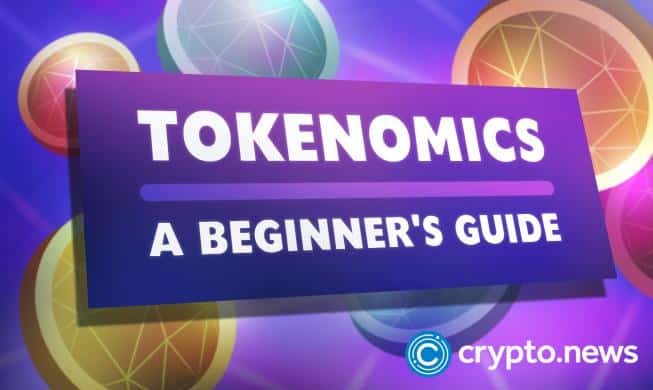Tokenomics: The Economics Behind Cryptocurrencies

Tokenomics is a critical aspect of the cryptocurrency market that can help us identify which digital assets are worth investing in. With over twenty thousand crypto assets currently available, understanding a crypto network’s tokenomics can provide valuable insight into a cryptocurrency’s potential future value. This article will explore tokenomics and how it can help investors make informed decisions in the crypto market.
Table of Contents
What Is Tokenomics?
Tokenomics refers to the econonics that affect the value of a crypto token, including token supply and circulation, incentives and benefits available to token holders, a token’s real-world utility, how its issued, etc.
Every crypto asset follows a tokenomics model. A crypto project with a well-thought out tokenomic design with the right incentives to hold long-term typically performs better than projects without a smart design.
Projects that fail to provide an excellent tokenomics design have met an early end, while some others hard forked to include the right structures along the way.
While a project may provide amazing utility and innovative concepts, without a good tokenomics design to breathe life into them, it will likely fail to attract and retain users.
Successful founders and developers, therefore, carefeully consider their approach when designing their tokenomics to make it attractive for token holders.
Types of Tokens
There are many types of tokens, serving different purposes. Let’s take a look at some of the most common types:
Security Tokens
Security tokens are representations of real-world securities, which are an investor’s contractional relationship with an organization, typically as a shareholder or creditor.
Wherever a security token represents a real-world asset, the value of the security token is directly tied to the value of the real-world asset. For instance, if a security token represents a price of land worth half a million dollars, that token is valued at half a million dollars and can be sold for that amount or the prevailing market price.
There have been several disputes between crypto projects and the US SEC on the nature of security tokens. One of the most famous controversies is the US SEC charging Ripple for selling XRP as unregistered security tokens.
Utility Tokens
Utility tokens are used to access the services of certain applications in a blockchain ecosystem.
A good example of a utility token is LINK, a token that is to reward node operators for validating transactions and keeping data and contracts secure.
Platform Tokens
Platform tokens allow users to access services on specific platforms.
A good example is Storj (STORJ), which alles holders to access the decentralized cloud storage solution.
Platform tokens and utility tokens share a very identical function. The difference between them being that platform tokens are limited to use only on the platforms for which they are created. Conversely, utility tokens are typically more flexible, and are used to access services across the blockchain protocol on which they operate.
Governance Tokens
Governance tokens allow users of a blockchain protocol to vote on its future development.
Each governance token usually confers voting rights 1:1 to its holder. The incentives favor token holders to make positive decisions for the protocol as it should accrue more value for their tokens if the project is successful.
Other tokens like fungible and non-fungible tokens also exist, but they generally fall under these categories here.
The Role of Tokens in Tokenomics
Tokens play a vital role in tokenomics because they are the major ways through which users access and interact with crypto projects.
Tokens, in this way, affect the value of their related networks by their maximum supply metrics, their mode distribution within the network, how they are added to or removed from the blockchain on which they run, and their ability to solve problems.
Projects use their tokens to implement successful tokenomics. Some of the ways tokens are used in tokenomics include:
- Airdrops – A reward for early and engage users in the crypto project.
- Liquidity mining/yield farming – Allows token holders to lock their tokens for rewards, which reduces the circulating supply of the tokens.
- Token allocations – Projects can allocate portions of the tokens to the team, which represents a share of ownership and motivates the team to continue building.
- Token burns – Tokens can be completely destroyed and taken out of circulation, which can help the token price to grow over time.
- Staking – Crypto projects can incentive token holders to hold onto their tokens for a long period of time by allowing them to earn staking rewards for helping to secure a crypto network.
All these aspects of tokenomics are deployed to create an incentive stream to fuel more adoption and demand for a crypto project and it’s token.
Examples of Real-World Tokenomics Models
Let’s examine the tokenomics of some of the well-known crypto assets in existence.
Bitcoin
Bitcoins are produced by a process called “mining”, where people use computers to verify transactions and are rewarded with bitcoins in return.
By 2140 (128 years from now), bitcoin is expected to reach its maximum supply limit of 21 million coins. Until then, the number of new coins that are mined will continue to decrease by fifty percent every four years. This is known as Bitcoin halving, an event programmed in the Bitcoin mining algorithm to create scarcity. Hence, as people buy and hoard coins, prices would skyrocket.
This tokenomics has seen massive success, as over the years, the price of bitcoin has risen to a high of $62,000.
Ethereum
Ethereum, on the other hand, has a more complicated tokenomic design that has changed and plans to change even in the future.
Unlike Bitcoin, most of the Ethereum tokens (ETH) in circulation were pre-mined, which means the tokens were released at the launch of the Ethereum blockchain. The rest of the tokens currently in circulation were mined by people using computers to verify transactions and getting rewarded in ETH.
Miners are given 2 ETH per block mined and another 1.75 ETH reward for something called an “uncle block” (a block that wasn’t mined to the main blockchain). However, the rewards are not constant as they have gone lower, so it is more complicated to track and calculate the real amount of ETH issued to circulation.
With Ethereum 2.0, tokenomics will also change as the network will move to Proof of Stake (PoS).
Dogecoin
Dogecoin employs an issuance that is quite different from that of Bitcoin: its token supply is essentially unlimited. Dogecoin’s circulating coin supply was already at a staggering 131.13 billion as of September 2021.
Some projects have created rules in which tokens are transferred into a wallet that cannot be recovered, hence, steadily reducing supply and increasing their scarcity. If the token has been widely accepted, its reduction in supply will increase the demand for it, thereby driving up prices.
The Importance of Tokenomics for Crypto Investors
The importance of tokenomics for anyone seeking to either trade or invest in crypto assets cannot be overemphasized.
If you are an investor in the web3 space, understanding the established economics regulating any crypto asset will give you a good idea about its value and help you make informed decisions.
It could save you from unnecessary losses and increase your chances of profitable investments. Never invest in a crypto assset without first researching and understanding its tokenomics.
FAQs
Does Tokenomics Affect the Price of a Crypto Asset?
Yes, it does. The value of cryptocurrencies is tied to the effectiveness of their tokenomics. Similar to the way financial economics affect the price of a company’s stock, tokenomics affect the price of a crypto asset.
How Do You Read Tokenomics?
The tokenomics of crypto assets are usually found in whitepapers containing their supply, emission rates, allocation, and distribution. However, scam projects often lie in their whitepapers. Hence, it’s important to research protocols yourself. You can also research insights from other experienced professionals in the crypto space.
What Determines the Price of a Crypto Asset?
Fundamentally, the price of a crypto asset is driven by demand from traders and investors and its available supply in the market.
However, to create a strong demand for a digital currency or token, numerous factors come into play. They can range from having robust tokenomics and a strong team that delivers as laid out by the roadmap to artificially created hype on social media and in the press.












